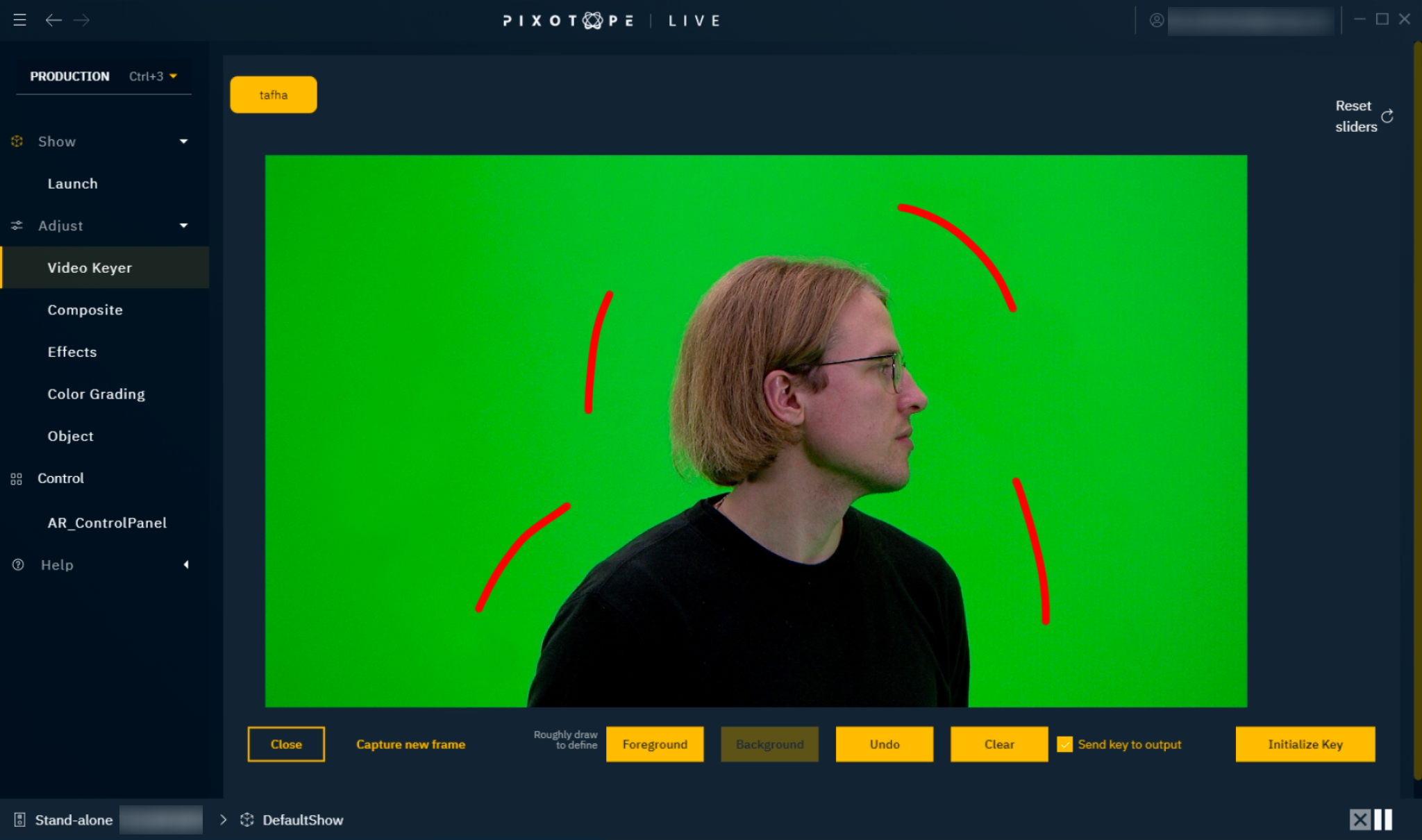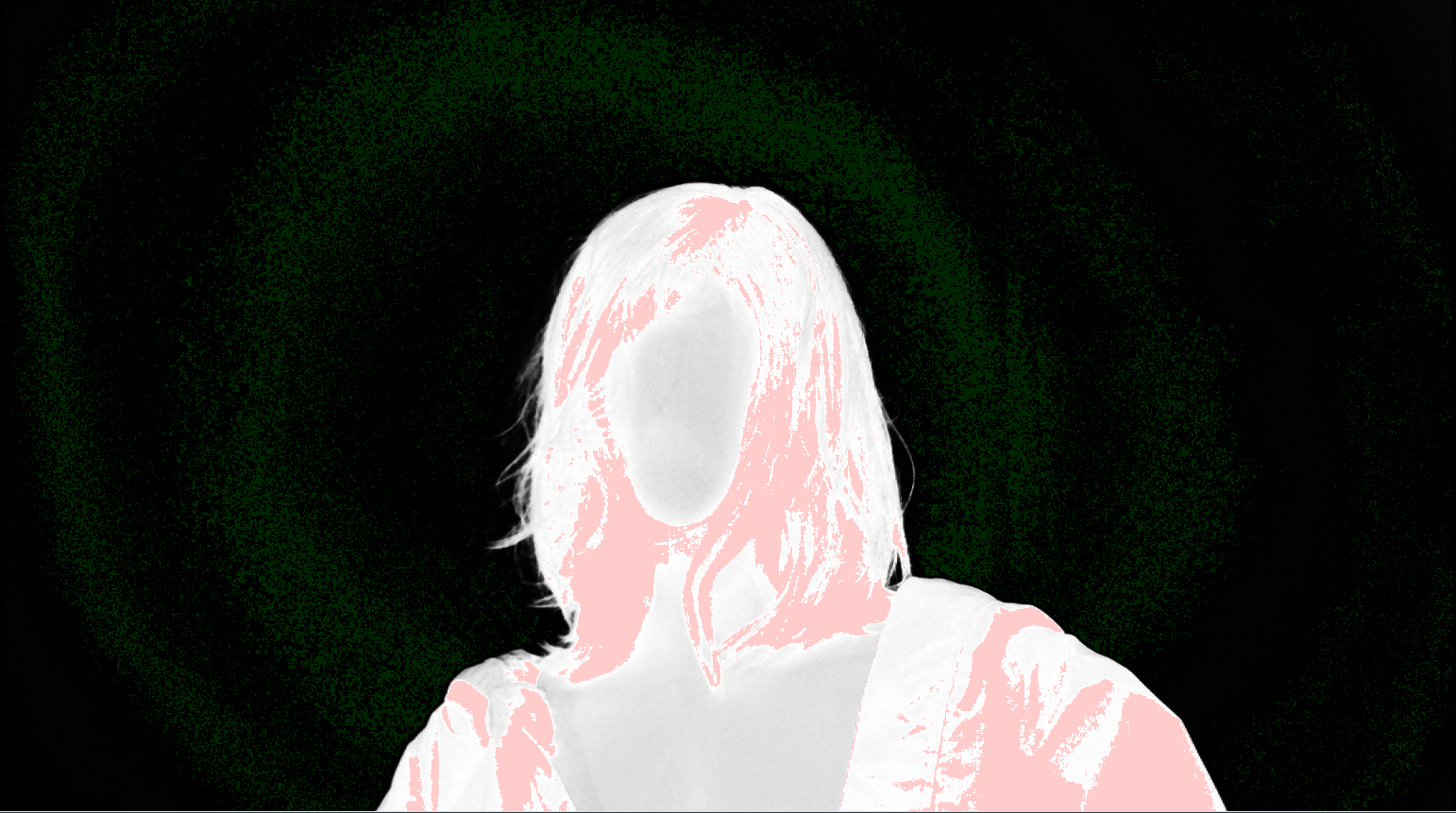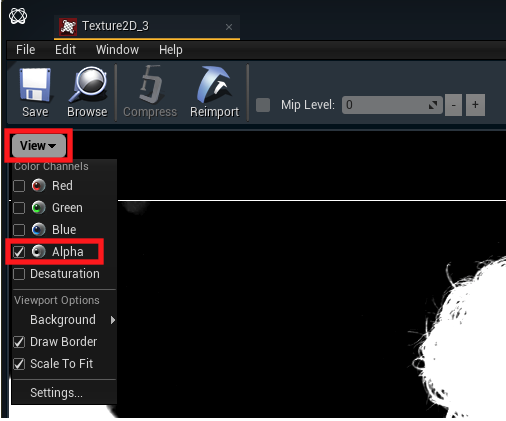Use the video keyer
Introduction
The quality of the produced key is highly dependent on:
the green screen
the lighting
the camera
the position and clothing of the talent
Learn more about how to create a good keying setup
Academy Tutorial - Using the Pixotope Keyer
Looking at the different Keyer models
Key video
The video keyer is an easy-to-set-up real-time chroma keyer that you can use to key your video input.
Double-check that:
the camera system setup matches the physical camera
the camera system is routed to the correct machine
Go to PRODUCTION > Adjust > Video Keyer
Select the camera system
Click "Enable Video Keyer"
Position a talent or a stand-in person on the stage, or else use a dummy model with hair, as well as a water bottle to set the transparency
Click "Initialize key"
Director grabs one image of the video feed.
Draw on the image to select which colors are background and should be keyed out
These are typically the flat green values - do not select the dark greens on the floor if you wish to get contact shadows.It usually only needs a couple of strokes
If you want to recapture the image, just click "Capture new frame"
To delete all strokes use the "Clear" button
To undo your previous selection, press "Undo"
If there are holes in the foreground where certain colors have been automatically included into the background, these can be specifically added into the foreground. Click "Foreground" and then select any problematic colors i.e. those that are more difficult to key because they contain a significant amount of the main background color (ie. green with a green screen or blue with a blue screen)
Click "Initialize Key" once you are done
Select "Send key to video output" to examine the result to view the generated alpha on the video monitor.
Select "Visualize alpha extremes" for a closer look at the alpha extremes.
The fully opaque areas are displayed in light pink

Refine the initial key by selecting more colors. Keep monitoring the results and repeat several times as needed
Click "Close" when you are happy with the initial key
Refine the parameters to improve the key
Zoom in tight on the head of the model, and adjust the focus so that the hair is clearly shown. Then zoom back out again without adjusting focus
Don't forget to turn off "Send key to video output" when you are happy with your key.
The alpha channel can also be seen in the Editor if needed:
Create presets
Use quick presets to try out and save different settings, and quickly switch between them while still editing.
Use named presets to save settings using custom names and recall them later through the control panel or the API.
Learn more about how to Use presets
Select Keyer Model
There are 3 keyer models available:
Chroma - PX1 (legacy)
legacy keyer present in Pixotope 1.5
Chroma - PX1 - Linear (legacy)
legacy keyer which extracts the key from linear video rather than the gamma corrected video. This helps the alpha mask look sharper
Chroma - PX2 (default)
main keyer using a more advanced color model with more precise color extraction and sharper alpha mask
With "Automatic Clean Plate Generation" enabled and "Add Luma Key" and “Add Shadows” being used, the reference is automatically generated from the locally closest backing color.
Refine
Adjust Background
Increases the range of the selected background colors.
Adjust Foreground
Increases the range of the foreground colors
Maintaining a good distance between the Background and Foreground sliders will ensure a good soft edge on the key.
Add Luma Key
Adds to the key based on the pixel luma value. It works upwards from black.
This can help to fill in regions of a soft foreground region.
With a good initial pick of the background and foreground colors using the Labelling tool, there should be little need to adjust background and foreground controls. It is often preferable to fill holes in the foreground with a little Add Luma Key, rather than by hardening up the foreground.
Adjust Key Color Intensity
The color values are automatically preset from the initializer when foreground picks are drawn.
Chroma - PX1 - Red, Green and Blue channels
Allow adjustment of key intensity based on RGB pixel value to make red “repel” or be “insensitive” to keying, for example. A manual override of the preset values is possible if desired.
Reducing the red can be useful for preserving colors that are close to green, e.g. yellows.
To preserve cyans, you have to reduce the blue intensity slightly.
Chroma - PX2 - Strength
In this keyer model, the slider is related to global adjustment strength. A manual override of the preset values is possible if desired.
Mask adjustments
To adjust the alpha mask created from the keyer.
Gamma
Controls the gamma correction of the key.
Gain
Controls the gain of the key. 1 is the default and larger values increase the gain.
Erode
Controls the tightness of the alpha mask. A higher value results in a more eroded mask. This is a sub-pixel erode control. Erode should be used with extreme care and only as a last resort.
Detail Enhancement
Controls the strength of the effect. Increasing the level will help to include more details in the soft edges.
Shadows
The Shadow controls allow you to add shadows that exist on the evenly lit backdrop.
Add shadows
Controls the intensity of the key in the shadow areas. A value of zero gives no shadows - set a subtle value to get believable soft shadows.
Adjust contrast
Adjusts the depth of the shadows that are generated. The default is 100%.
Despill
The Despill controls allow you to vary the removal of the background color that has spilled into the foreground. You can adjust the foreground color range that is despilled, as well as adjusting the hue for the areas containing the spill.
Luma
Controls the luma range on the despilled area - this blends back the original luminance value of the edge pixels, rather than using the luminance of the background pixel - carefully controlled, this will blend the edges in better to the background, and improve blending for compositing.
Chroma
Controls the strength of the spill removal. The default is 100% with full despill. Reduce the value to see if any colors other than the background are being despilled as well. If you see other colors are being despilled, you can use the Cutoff control to correct that.
Set Cutoff Automatically
Setting Cutoff Automatically sets the cutoff range automatically and disregards the manual Cutoff range.
This automatic mode relies on foreground picks. If there are none, the automatic mode resets the cutoff value to 0.
Cutoff
Controls the range of colors that are despilled from the original background picked color. For example, yellow and light blue may also be despilled by default due to having a close color distance from green/blue screens. Adjusting the Cutoff can reduce the despill effect for those pixels and so preserve the original foreground colors.
Hue
Changes the hue of the despilled area.
Hue changes the hue angle of the range of the despilled colors. Use with care to preserve skin tones - it is generally better to use the Cutoff control rather than the Hue to preserve the original foreground colors.
Respill
Respill can improve the visual integration of the keyed object into the scene. When enabled, sampled colors from the scene are applied to the edge of the keyed object.
Strength
Controls the amount of respill.
Use custom color
Pick a custom color for the respill.
The best results are usually achieved using colors automatically sampled from the scene.
Composite
Multiply key with fill
This is the same control as in PRODUCTION > Adjust > Composite > Video > Input. Go to Adjust Composite
More details about Pixotope's Chroma Keyer.

